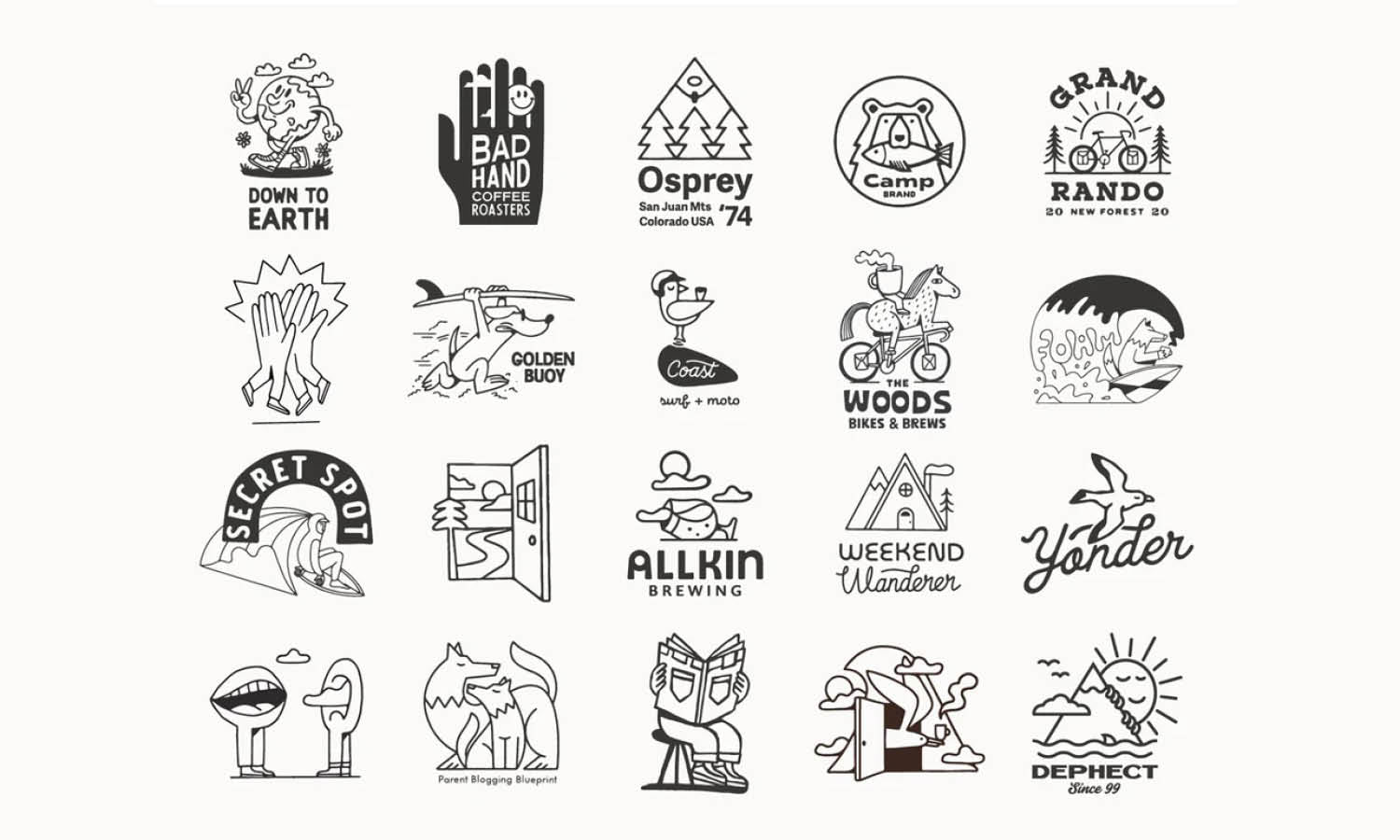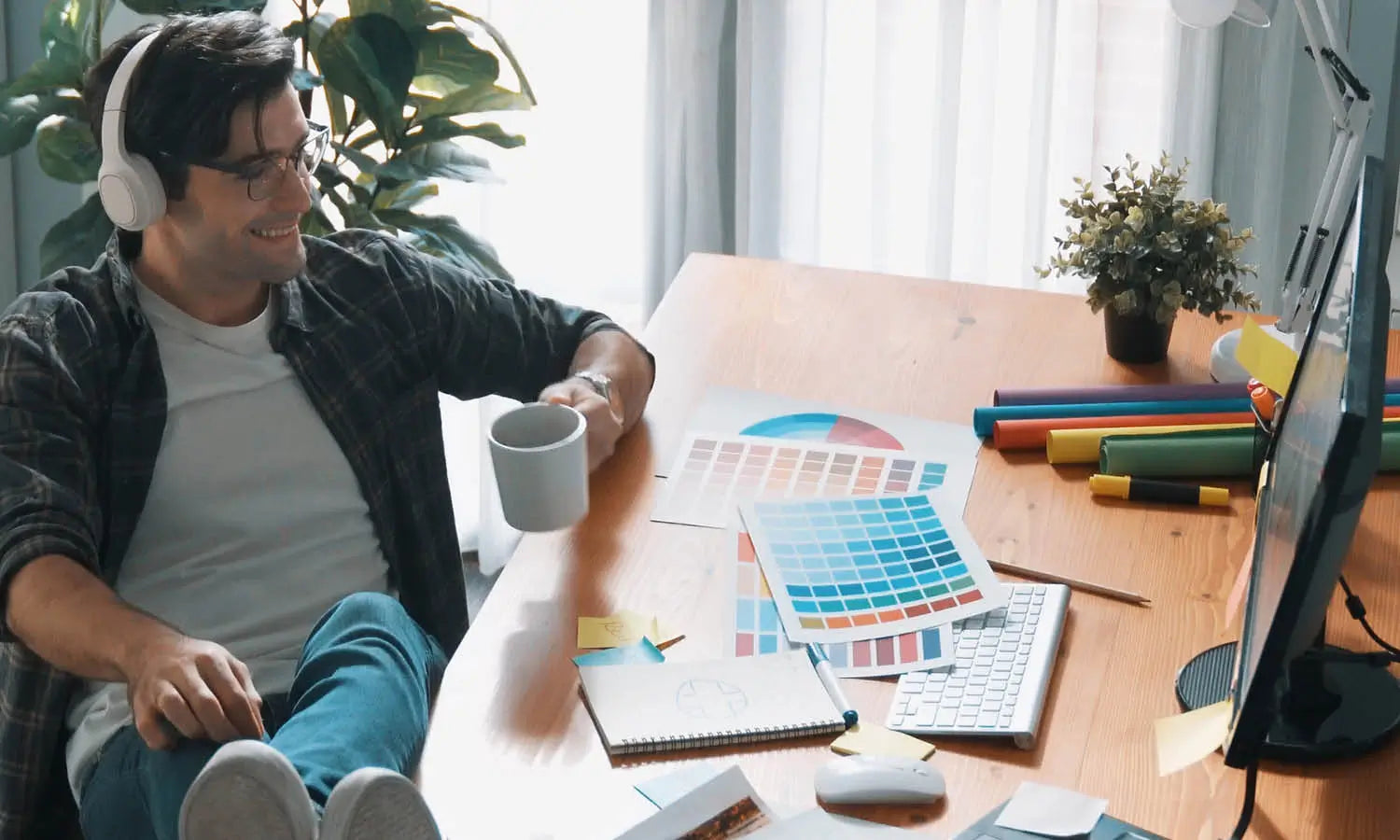Design Principles That Logo Designers Should Know

Source: Shot Identity, M Lettermark, Dribble, https://dribbble.com/shots/19480213-M-Lettermark
Logo design is both an art and a science, requiring not only creativity but also a firm understanding of design principles to create visually compelling and effective logos. These principles serve as the backbone for designers, guiding them in crafting logos that are not only aesthetically pleasing but also functional and aligned with the brand's identity. Understanding these fundamentals is crucial for every designer who aims to deliver logos that stand out in today's competitive market.
Whether you are a beginner seeking to understand the basics or a seasoned professional aiming to refine your skills, mastering these design principles can significantly enhance your ability to develop logos that resonate with audiences and endure over time. This article delves into key design principles that every logo designer should know, providing you with the essential tools to elevate your design practice and create meaningful, impactful brand symbols.
Simplicity Is Key
In the realm of logo design, simplicity reigns supreme. A simple logo design not only ensures clarity and ease of recognition but also enhances the logo’s versatility and adaptability across different media. A minimalist approach removes unnecessary elements that may clutter the design, focusing on essential features that portray the brand’s essence. For logo designers, simplifying a logo means more than just minimalistic aesthetics—it involves distilling the brand’s identity into a single, easily comprehensible visual statement.
This principle of simplicity helps the logo to be instantly recognizable, which is crucial for brand recall and recognition. In practice, a simple logo design can effectively communicate the brand's message without relying on elaborate detailing, making it easy for the audience to remember and identify the brand at a glance. Thus, embracing simplicity can lead to a stronger, more effective brand presence in a crowded marketplace.
Memorability Matters
Creating a memorable logo is pivotal in establishing a brand’s identity and ensuring it stands out in a saturated market. A memorable logo captures the essence of the brand in a way that sticks in the minds of consumers. This requires not only creativity and innovation but also a strategic application of design principles that evoke familiarity and relevance. Effective logo design strikes a balance between uniqueness and industry-appropriate symbolism, making it distinct yet relatable for its target audience.
The key to enhancing memorability is to craft a logo that is both simple and emblematic, incorporating elements that trigger recognition and association with the brand’s values and services. Additionally, the use of distinctive color schemes, shapes, and typography can contribute to a logo’s memorability, making it more likely to be recalled by customers. Logo designers must consider how these elements can be harmoniously combined to create a lasting impression that resonates well beyond the first interaction.
Timelessness Over Trends
Designing a timeless logo involves focusing on enduring appeal rather than fleeting trends. Timeless logos transcend the ever-changing whims of design fads, ensuring that a brand’s identity remains effective and relevant for years to come. A timeless design adheres to fundamental principles of good design rather than current styles that might soon become outdated. This approach involves choosing simple, classic typography, and avoiding overly elaborate graphics that might not age well. The key is to encapsulate the brand’s core values and ethos in a design that can endure changes in the market and consumer preferences.
By prioritizing timelessness, logo designers craft a visual identity that helps brands build a lasting relationship with their audience, supporting long-term brand recognition and loyalty. This strategic focus on longevity over short-lived popularity secures a logo’s place in the visual landscapes of both today and tomorrow.

Source: Namtra Brand Identity, VASK Studio, Dribble, https://dribbble.com/shots/19338155-namtra-Brand-Identity
Versatility Is Vital
Versatility is a critical design principle for logo designers, reflecting a logo’s ability to function across various applications and platforms. A versatile logo performs effectively in different contexts, whether displayed on a tiny mobile screen, a large billboard, or corporate merchandise. This adaptability is crucial for maintaining brand consistency across all touchpoints. Designing a versatile logo typically involves creating a simple, scalable design that retains its impact without loss of quality, regardless of size or format.
It should also work well in both full color and monochrome, ensuring it can be used in various media without losing its identity. Logo designers must consider these aspects from the start of the design process to ensure the final logo can serve its purpose in a dynamic range of environments, making versatility a fundamental aspect of successful logo design.
Appropriate for the Audience
Ensuring that a logo is appropriate for its intended audience is a crucial aspect of logo design. This principle involves understanding the demographics, culture, and preferences of the target market to create a design that resonates and connects. A logo must reflect the brand’s personality while also appealing to its specific audience. For instance, a logo for a children's toy company might incorporate playful, colorful elements, whereas a law firm’s logo would benefit from a more conservative and professional design. The choice of shapes, colors, and fonts should communicate the right message and evoke the intended emotional response.
By conducting thorough market research and considering the client's industry and customer base, logo designers can craft a logo that not only stands out but is also deeply relevant and engaging to its viewers. This tailored approach ensures that the logo not only captures attention but also builds a lasting connection with its audience.
Color Psychology
Color psychology plays a pivotal role in logo design, influencing how a brand is perceived by its audience. Colors carry specific meanings and emotions, which can significantly impact consumer behavior and brand recognition. For instance, blue often represents professionalism, security, and trust, making it a popular choice in corporate and financial sectors. In contrast, red can evoke feelings of excitement and passion, which is ideal for brands looking to portray energy or urgency.
Understanding the psychological impact of different colors can help logo designers make informed decisions that enhance a brand’s messaging. Incorporating the right colors into a logo design can create a stronger emotional connection with the audience, supporting the brand’s overall marketing strategy. By leveraging the power of color psychology, designers can effectively convey a brand’s values and ethos, making the logo not only visually appealing but also psychologically resonant with its intended market.
Balance and Proportion
Balance and proportion are foundational elements in logo design, crucial for creating a visually appealing and harmonious logo. Balance involves distributing the visual weight of elements within a logo evenly, ensuring that no single part of the design overpowers another. This can be achieved through symmetrical or asymmetrical design approaches, depending on the brand’s personality and the message it intends to convey. Proportion, on the other hand, refers to the relative size and scale of the various elements within the logo. Proper proportion ensures that every part of the logo is cohesive and the design feels like a unified whole. When elements are proportioned correctly, the logo can capture the viewer’s attention in a way that feels just right, without any one part dominating unnecessarily.
This sense of equilibrium not only enhances the aesthetic quality of the logo but also its effectiveness in communicating the brand’s identity. A well-balanced and proportionately designed logo can make a brand appear more professional, reliable, and attractive to its target audience.

Source: Pluna Logo Design, VASK Studio, Dribble, https://dribbble.com/shots/16838803-Pluna-Logo-design
Readability Is Crucial
Readability is a critical consideration in logo design, especially when the logo incorporates textual elements. A logo’s text must be legible across various applications and sizes, from tiny mobile screens to large billboards. Choosing the right typeface is paramount; it should not only reflect the brand’s personality but also ensure clarity and ease of reading. Avoid overly stylized fonts that might look appealing at large sizes but become illegible when reduced. The spacing between letters, known as kerning, also plays a vital role in readability. Proper kerning prevents letters from blending into one another at smaller sizes while maintaining the integrity of the design.
Additionally, the color contrast between the text and its background can significantly affect readability. High contrast colors can make the text stand out more and be easier to read from a distance or in passing. Ensuring that a logo is readable in various contexts is essential for effective brand recognition and recall, making it a crucial aspect of the design process for any logo designer.
Originality Boosts Branding
Originality in logo design is essential for distinguishing a brand in a crowded market. An original logo serves as a unique identifier, setting a brand apart from its competitors and capturing the essence of the brand in a unique way. It creates a memorable impression that can foster brand loyalty and recognition. To achieve originality, logo designers should avoid clichés and generic templates that are commonly used within the industry. Instead, they should strive to understand the brand’s core values and personality deeply, translating these insights into a design that speaks uniquely to its audience.
Utilizing custom graphics, unique typographic treatments, and innovative color combinations can contribute to a logo’s originality. The aim is to craft a design that not only reflects the brand’s identity but also resonates with its target audience on a personal level. By prioritizing originality, designers can create logos that not only stand out visually but also have the potential to become iconic symbols within the marketplace.
Consistency in Branding
Consistency in branding is pivotal for maintaining a coherent and recognizable brand identity. A consistent logo design across all platforms and touchpoints reinforces the brand message and enhances customer recognition. It involves maintaining the same color schemes, fonts, and style elements in the logo no matter where it is displayed. This consistency helps build trust and reliability in the brand, as customers come to know and expect the visual cues associated with the brand’s identity.
For logo designers, this means creating a versatile logo that adapts well to different mediums while retaining its core elements. Consistency should extend beyond the logo itself to all aspects of the brand’s visual and verbal communication, creating a seamless brand experience for customers. By ensuring consistency, brands can foster a strong and enduring connection with their audience, making the logo a lasting symbol of the brand’s values and promise.
Conclusion
Mastering the key design principles is essential for any logo designer aiming to create impactful and enduring logos. These principles—ranging from simplicity and memorability to consistency and originality—serve as the foundation for effective logo design. By adhering to these guidelines, designers can ensure that their creations not only visually captivate but also clearly communicate the brand's identity and values. As the field of design continues to evolve, these timeless principles remain critical tools for developing logos that resonate with audiences and strengthen brand recognition. Embracing these concepts will undoubtedly enhance any designer’s ability to produce compelling and successful logo designs.
Let Us Know What You Think!
Every information you read here are written and curated by Kreafolk's team, carefully pieced together with our creative community in mind. Did you enjoy our contents? Leave a comment below and share your thoughts. Cheers to more creative articles and inspirations!
















Leave a Comment